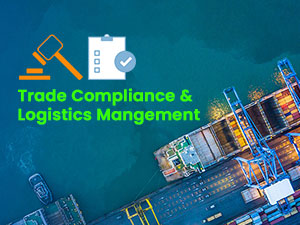Blog Details

Is the Union Budget 2024-25 a Game-Changer for the Logistics and Supply Chain Sector?
1. Introduction
The Union Budget 2024-2025, presented by Finance Minister Nirmala Sitharaman, has outlined several initiatives to revolutionize India's logistics and supply chain sector. This budget emphasizes infrastructure development, technological advancements, and green logistics, making it a significant step toward a more efficient and sustainable supply chain network in India.
2. Massive Infrastructure Investment
2.1 Capital Expenditure Boost
One of the most notable aspects of the budget is the substantial increase in capital expenditure. The government has allocated ₹11.11 lakh crore for infrastructure projects, marking an 11.1% increase. This investment is set to enhance the logistics framework by developing new industrial parks, improving road and rail connectivity, and expanding port infrastructure.
2.2 Railway Corridors
The development of three major railway corridors – port connectivity, energy, mineral, and cement corridor, and high traffic density corridor – is set to streamline freight movement across the country. This initiative will reduce congestion, improve operational efficiency, and significantly lower logistics costs.
3. Advancing Green Logistics
3.1 Rooftop Solarization
Sustainable logistics is a key focus of the budget. The continued investment in rooftop solarization projects aims to power logistics operations with renewable energy, reducing the sector's carbon footprint. This initiative towards green logistics positions India as a leader in sustainable supply chain practices.
3.2 Electric Vehicles and Charging Infrastructure
The budget also emphasizes the adoption of electric vehicles (EVs) in the logistics sector. Investments in EV charging infrastructure and incentives for EV manufacturing are expected to accelerate the transition to green logistics. This shift reduces operational costs for logistics companies in the long run.
4. Technological Innovations in Logistics
4.1 Digital Freight Corridors
The introduction of digital freight corridors is another highlight of the budget. These corridors will leverage technology to enhance the efficiency of cargo transport, ensuring real-time tracking and faster delivery times. This innovation is crucial for meeting the growing demand for swift and reliable logistics services.
4.2 Modernization of Railways
Modernizing the railway network is a significant step towards improving the logistics sector. The budget proposes the conversion of 40,000 normal rail bogies to Vande Bharat coaches, which will enhance passenger safety, reduce travel time, and boost tourism. Additionally, this modernization will facilitate faster and more efficient cargo movement.
5. Enhancing Trade and Customs Efficiency
5.1 Streamlined Customs Processes
To facilitate international trade, the budget introduces several reforms aimed at reducing customs clearance times. Import release times have been cut significantly – by 47% at Inland Container Depots, 28% at air cargo complexes, and 27% at sea ports. These improvements are expected to streamline trade operations, reduce costs, and enhance the overall efficiency of the supply chain.
5.2 Stable Tax Regime
Maintaining the current tax rates for direct and indirect taxes, including import duties, provides a stable and predictable environment for logistics and supply chain businesses. This stability is crucial for long-term planning and investment in the sector.
6. Economic and Employment Impact
6.1 Job Creation and Skilling
The budget outlines plans to create 4.1 crore jobs over the next five years, with a ₹2 lakh crore allocation for this purpose. This includes ₹1.48 crore for skilling 20 lakh youth, which will address the demand for skilled labor in the logistics sector. Enhancing the workforce's skills is essential for supporting the sector's growth and meeting the challenges of a dynamic global supply chain.
6.2 Support for MSMEs
Micro, Small, and Medium Enterprises (MSMEs) are the backbone of the logistics industry. The budget introduces a new credit guarantee scheme and increases the Mudra loan limit, providing much-needed financial support to these businesses. Additionally, the development of e-commerce export hubs will help MSMEs expand their reach and contribute to the growth of the logistics sector.
7. Conclusion
The Union Budget 2024-2025 sets a clear path for transforming India's logistics and supply chain industry. With significant investments in infrastructure, a focus on green logistics, and the adoption of technological innovations, the budget aims to create a seamless, efficient, and sustainable logistics network. These initiatives not only enhance the sector's competitiveness but also position India as a global logistics hub. The emphasis on job creation and skilling further ensures that the industry is well-equipped to meet future demands. This budget is a pivotal step towards a more connected and resilient logistics ecosystem, driving economic growth and prosperity.
4PL Consultancy has a team of experts in Tariff classifications of wide variety of Product lines – Medical spares, Aerospace, Radiation Oncology machines & spares etc.





